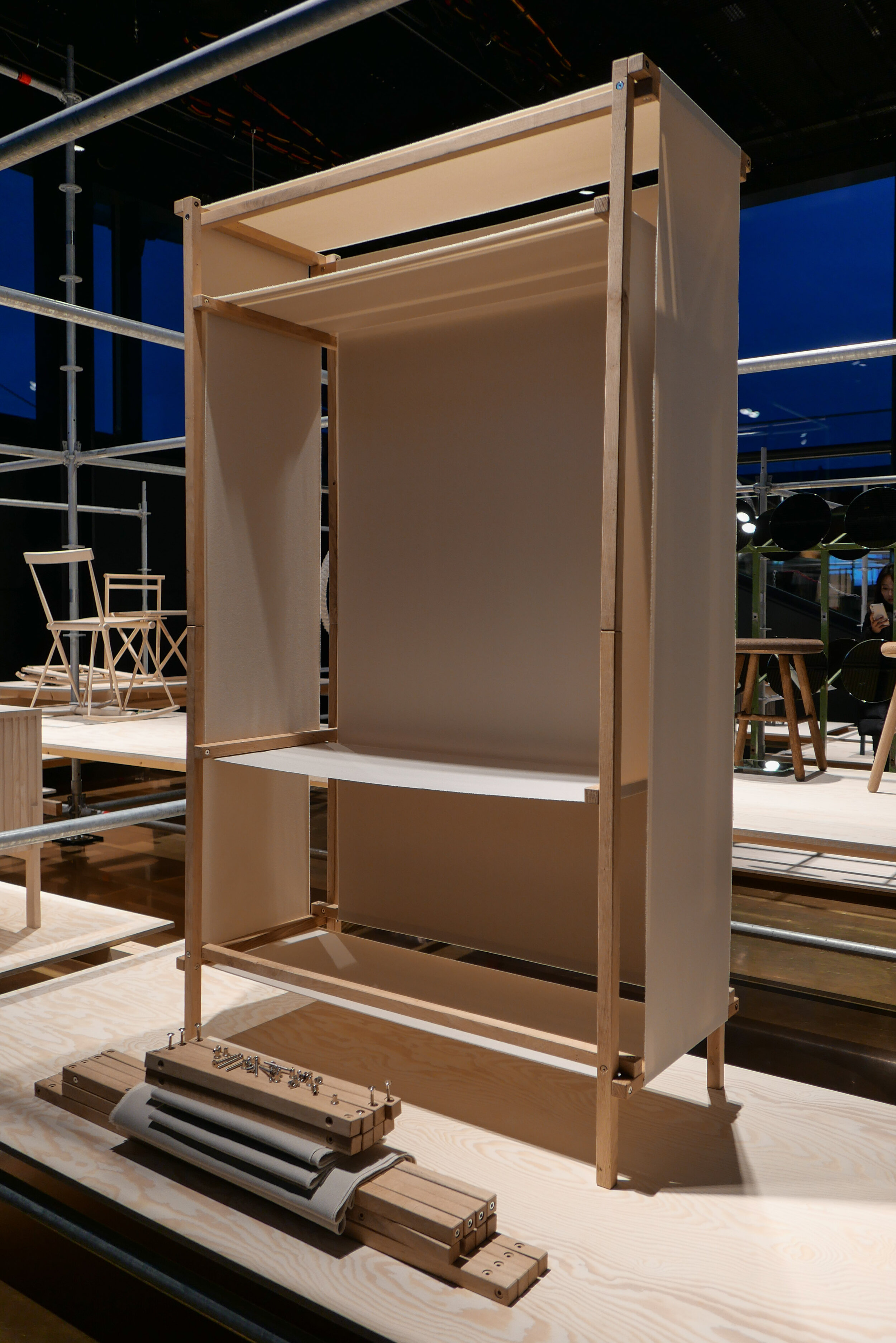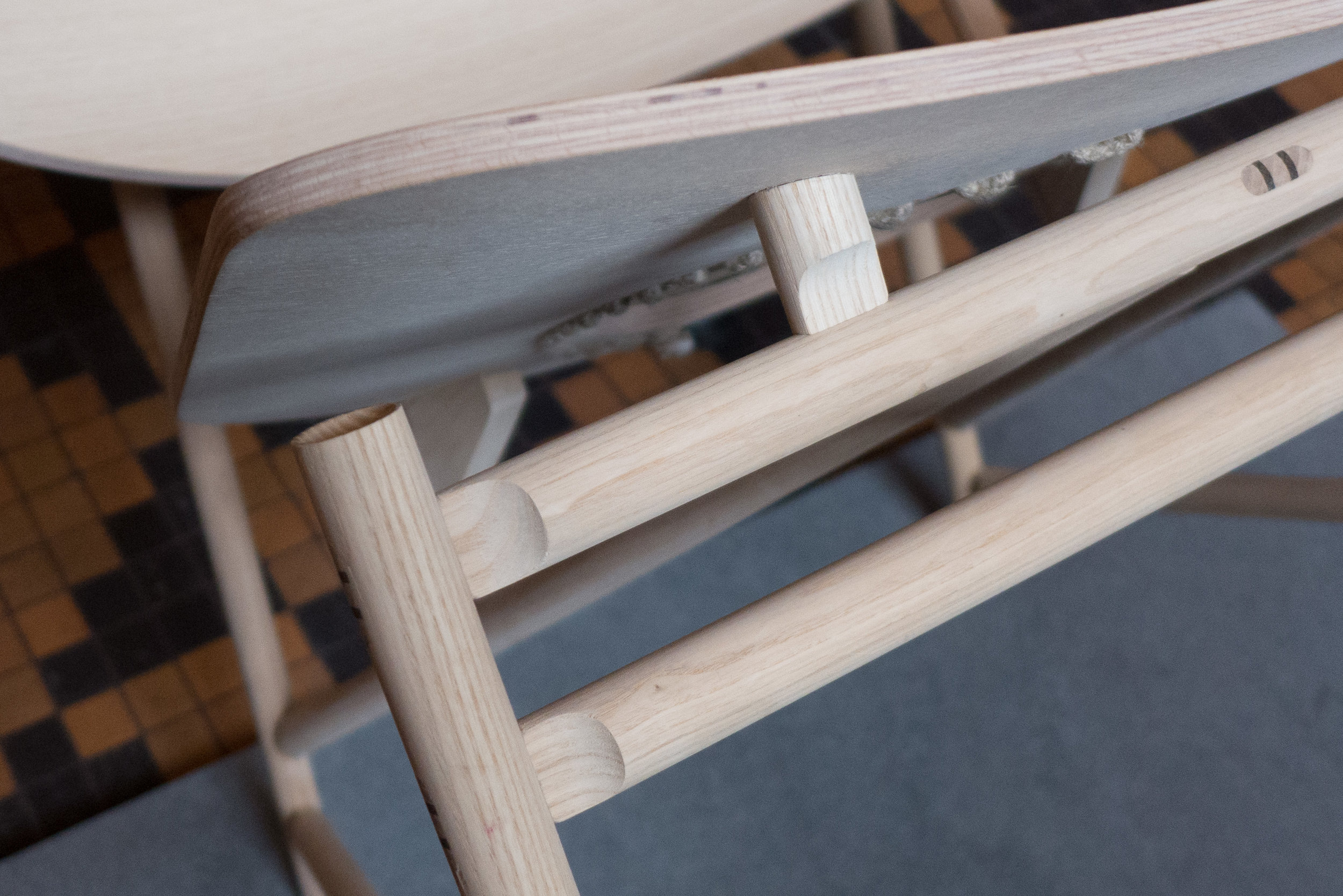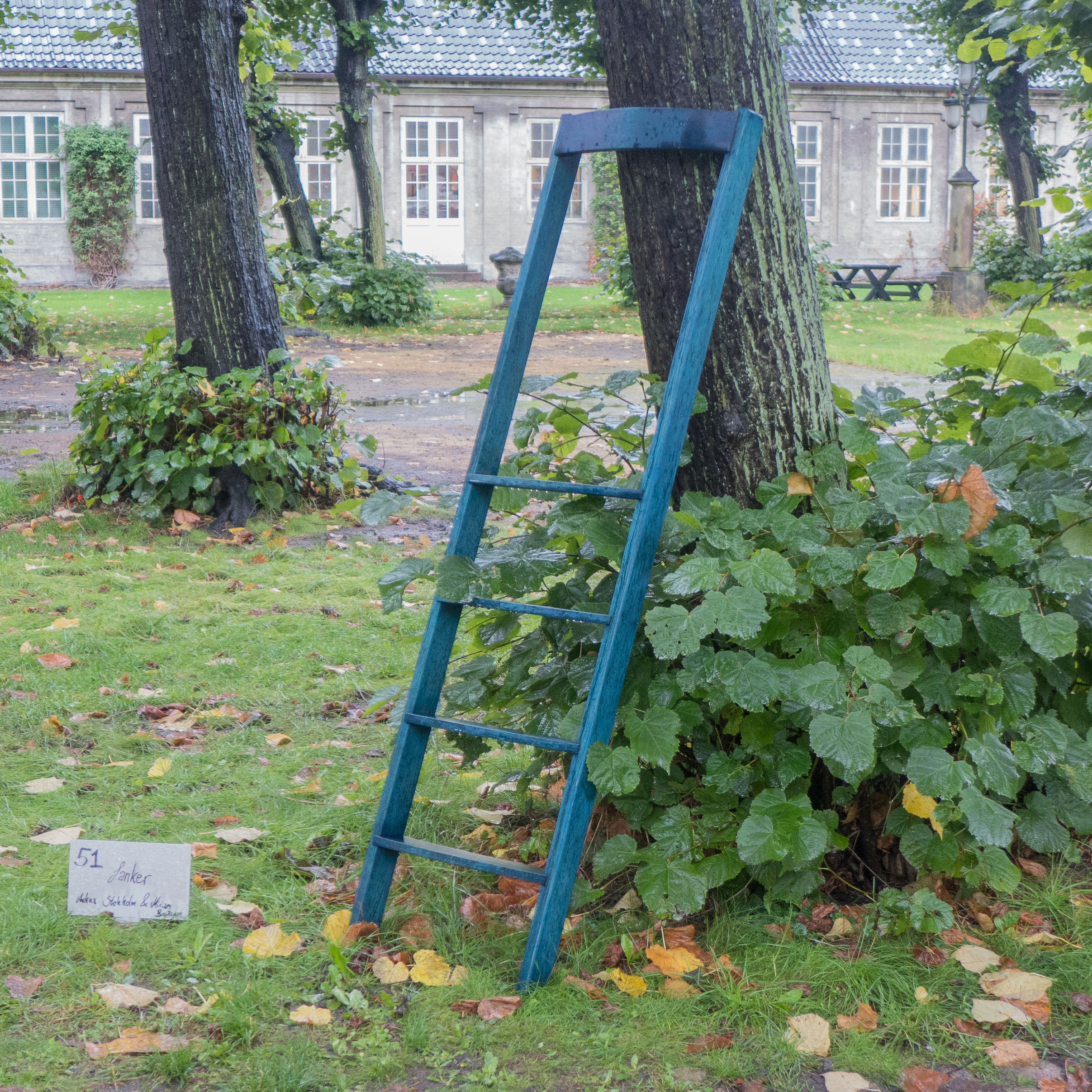Lise and Hans Isbrand designed two pieces for MONO - the Cabinetmakers’ Autumn Exhibition at Thorvaldsens Museum … a low wide chair called Sunrise with shaped and curved seat and back rest in laminated wood supported on an elegant frame in ash and a low table with a circular wood top supported on a steel frame, that for fairly obvious reasons, has the title O-X.
On the first day after the exhibition opened, there was a chance to meet Lise and Hans Isbrand and we talked about their work. They discussed the construction of the chair and were kind enough and patient enough to turn the chair over and turn it around so I could see how the frame is constructed and take photographs.
It struck me that the chair and table are different in character and form but they explore similar and related ideas about construction ... they explore how you construct as thin and as light a support as possible … with one in wood and one in steel.
Sunrise - the chair - has unusual and distinct features in it's design but is clearly in a long Danish tradition of cabinetmaking for furniture made from wood.
The seat and the back of the chair are broad oval shapes in thin laminated wood or plywood that are curved in just a single plane and that is a form of chair that goes back to the 1950s - to shell chairs designed by Hans Wegner - but where chairs by Wegner either had a bold support that was also in laminated wood or had a robust frame in wood, often oak, here, in the Isbrand chair, the seat and back are supported on a complex frame that exploits the qualities of the ash that has been used for legs and cross members that are barely thicker than a dowel and form a complicated and elegant scaffold.
O-X, the low table, also explores and experiments with the intrinsic characteristics of the materials … a large but thin disc in wood for the top is supported on a bent steel frame.
The top is about 20mm thick but the edge, rather than being cut square, has a very precise and deep chamfer that makes the top, from a slight distance, look more like a disc of sheet metal.
For the frame that supports the top, the design exploits the qualities of steel that is not just strong in itself but when bent into sharper curves than are possible with steam-bent wood it becomes even stronger as a support so it can either take a heavier weight or, as here, the parts of the supporting frame can be reduced in thickness.
If the chair is firmly within the Danish cabinetmaking tradition … a tradition of making furniture in beautiful wood, unadorned, in a sharp and precise form of construction executed with real and very obvious skill … the table is different.
It has a stripped back or pared down simplicity that reflects a specifically Danish form of minimalism. I suggested to Hans Isbrand that the table, in its style, looks back to the 1960s and was firmly put in my place. However, the use of metal for furniture, that actually goes back to the 1930s in Denmark, was strongest in Danish furniture in the 1960s but somehow has never really competed in popular taste with furniture in wood.
Perhaps, this was because, without deposits of iron or coal, there was little steel production in Denmark or perhaps simply because making good furniture in wood was so well established in Denmark that wood was and still is what Danish buyers choose to buy.
There are clearly great Danish pieces from the classical period of modern design that use metal - so the Super Elipse table by Piet Hein from 1964 or the chairs and tables with steel frames by Poul Kjærholm through the 1950s and 1960s - but even now there is much less furniture in glass and steel in a Danish furniture store than you would expect to see in Germany or France or Italy.
ISBRAND DESIGN































































